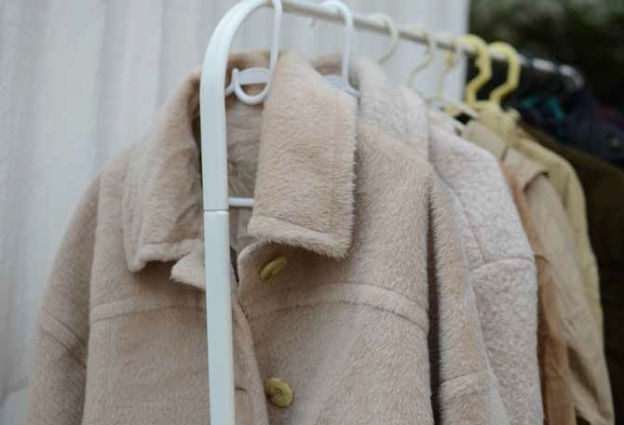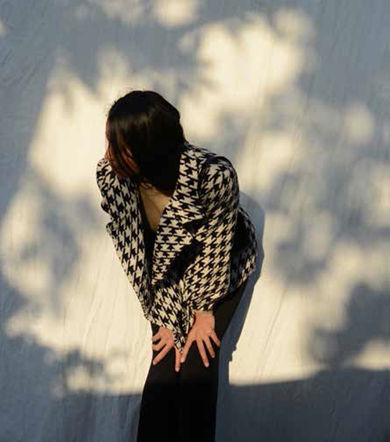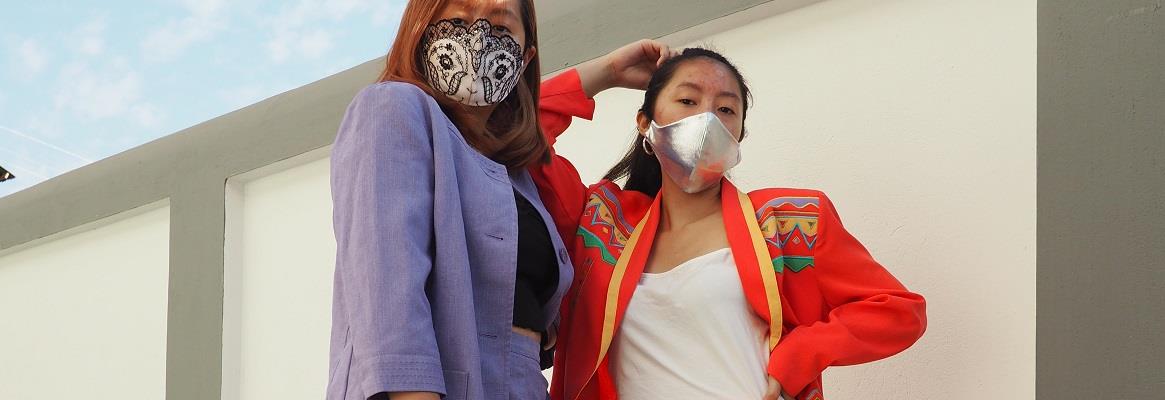The ongoing pandemic has ensured a rush of online thrift stores on social media. The tiny Northeastern state of Nagaland perhaps leads the way with youngsters setting up seller accounts and many more rushing to buy.
Growing up in the tiny town of Nagaland during the Eighties and Nineties, wearing thrifted goods formed a huge part of our lives, especially in the winters. Thrifted sweaters and jackets were not only cheaper, but warmer, softer, and much more durable than the ones we used to get in the apparel stores of our small hometown. And every few years, we would declutter our closets by identifying the clothes we don’t want to wear anymore, or those we’ve outgrown, and compile them in a sack to send them to our native village for our extended families. Clothing was passed on from one family member to the other for years until they were not fit enough to be worn again—read, torn.
By then, we would neatly remove the buttons and zippers, and turn them into household dusters to mop the floor, clean the kitchen platform and the like. This was the sustainable lifestyle we grew up in, in our small community. However, with the rise of fast fashion in the market by the 2000s, thrift shopping took a back seat for some years, affecting small business owners who earned their living by selling imported secondhand goods. Not only that, the culture of hand-me-downs also decreased drastically because apparels ceased to last after a few washes. To add, when earlier fashion trends lasted a season, with designers dropping their collections four times a year, now fast fashion drops new collections every week.
To keep up with the newest trends, clothes are now left untouched after one or two wears by fashionistas trying to keep up with the newest trends.
To provide a new age solution to the dying thrift market while keeping in mind the community’s love of shopping and fashion, a few creative entrepreneurs began to dig the few surviving thrift shops to spend hours scrolling through the pile of clothes to find rare pieces of clothing. Then they washed and steamed them, repaired any defects, and started selling them on Instagram with a considerable profit margin. By then, those apparels looked as good as new, and the prices slashed at 70–90 per cent as compared to the showroom prices. The idea was picked well by the customers and their clientele began to increase. As this new form of marketing was picking up in the state, the pandemic forced numerous people out of jobs, and thousands of this state’s citizens working or studying in cities were pushed back home. The lockdown due to the pandemic turned the newly unemployed and students to adopt the new trend themselves for a quick income, eventually turning online thrift market into a wave. Within the course of a few months, hundreds of Instagram accounts popped up either selling their own pre-loved clothes, or handpicked secondhand goods, or even upcycled apparel, thereby, increasing competition to the few trendsetters who were there first.

Stores slowly popped up for varied reasons, some with specific purpose, like the ‘Mishmash Online Store’ on Instagram, which was founded by four lifelong friends, Lucy Humtsoe, Medo Thapo, Nula Jamir, and Thungdi Murry, in 2019.
“The idea came about when we took a vacation to Bangkok in 2019. There, we decided to start a joint account where we could save some money each month for our next vacation,” said Humtsoe.
“We all have piles of clothes we would never use again, so we decided to sell them. It was supposed to be a temporary activity, but when lockdown was imposed, our friends and family began to request us to sell for them too, so it stuck. We now sell pre-loved clothes for others by taking 20 per cent profit, which includes packaging and delivery charges,” said Thapo. “We picked only those clothes which are as good as new, some never worn, and sold them at half the price or lesser depending on the trend of that particular apparel in the current fashion,” said Murry.
“We saw a surge of online thrift stores selling pre-loved clothes during the lockdown, and decided to join in. We wanted to find a new home for our old clothes, and have some fun in the process. We managed to sell our old clothes, worn once or twice, at half the original price, or even less depending on the quality,” said Asen, who founded Curated Cart along with her friends. Within a span of a few weeks, she along with seven other friends were richer by an average of ₹15,000 each.
With the increase of this new form of market, there is a slow rise of competition as well, pushing these new business owners to find unique ways to make their store stand out, like the ‘90s Something’, which sells vintage apparels by keeping the timeless fashion of the 80s and 90s alive. The store is run by two sisters Lentina and Imsurenla Longkumer, whose common love of vintage fashion inspired them to open shop.

Started during the lockdown as a store selling vintage pre-loved apparels, the sisters have now moved to selling thrifted vintage clothing. “We spend hours and even days searching for vintage pieces of apparel, then spend at least two days washing, steaming, repairing them if there’s any defect, then find a model and another day to take pictures of them to upload on social media.
People think it’s an easy job, but not everyone knows the time and amount of work that goes behind the scenes,” Lentina added.
Ajung Aier, the lady behind ‘Unisex Thriftstore’, who sells all of her collections under ₹500 said, “I’ve always enjoyed thrift shopping. Spending hours at thrift stores on weekends searching for unique apparels was like a hobby, so when I saw a surge of online thrift stores I knew right then that it’s something I could do. I sold secondhand winter fashion, pre-loved shoes, etc. Despite the fact that the price range formed the face of my store, I was able to get 50–70 per cent profit. The trick is in smartly manoeuvring my supply stores. If I buy in bulk, they give me at a cheaper rate. It’s a win-win for all.”
It’s safe to say that thrift shopping in the world of fashion has made a comeback this time with a heavy upgrade and flair by taking the market online with a more polished personality, and consumers can’t get enough of it.
“Who would have thought we could get such good quality, almost new products at very affordable prices,” commented Tajung Longkumer, who began thrifting during the pandemic, and is “hooked since then.”
“I’ve been thrifting ever since I was young. It helps me be in trend without having to empty my bank account. There are really good online thrift stores popping up these days, and it’s fascinating just how thrifting has become a global phenomenon,” gleaned another student Menule Chirhah.
Karan Thapa is a pioneer when it comes to thrift fashion influencers for men. After an accidental introduction to thrift stores in 2016, he stopped wearing firsthand goods since. A one of a kind style blogger, he manages an account called ‘The Thrift Ensemble’ where he educates his followers about how thrifted goods can be fashionable and cool for men as well. “Thrift markets have doubled or tripled during the past year with the rise of online stores on social media. I’m glad people are now realising the advantage of thrifted goods,” he said.
Thanks to the lockdown, thrifting has now earned a new form of respect denied in the past, and the trend is making us rethink our fashion choices in a positive light.
The timing couldn’t have been better, as there is a rapid shift of focus worldwide on the need for sustainable fashion, and this wave of the thrift market, circular fashion can pave the way towards a more sustainable future.








Comments